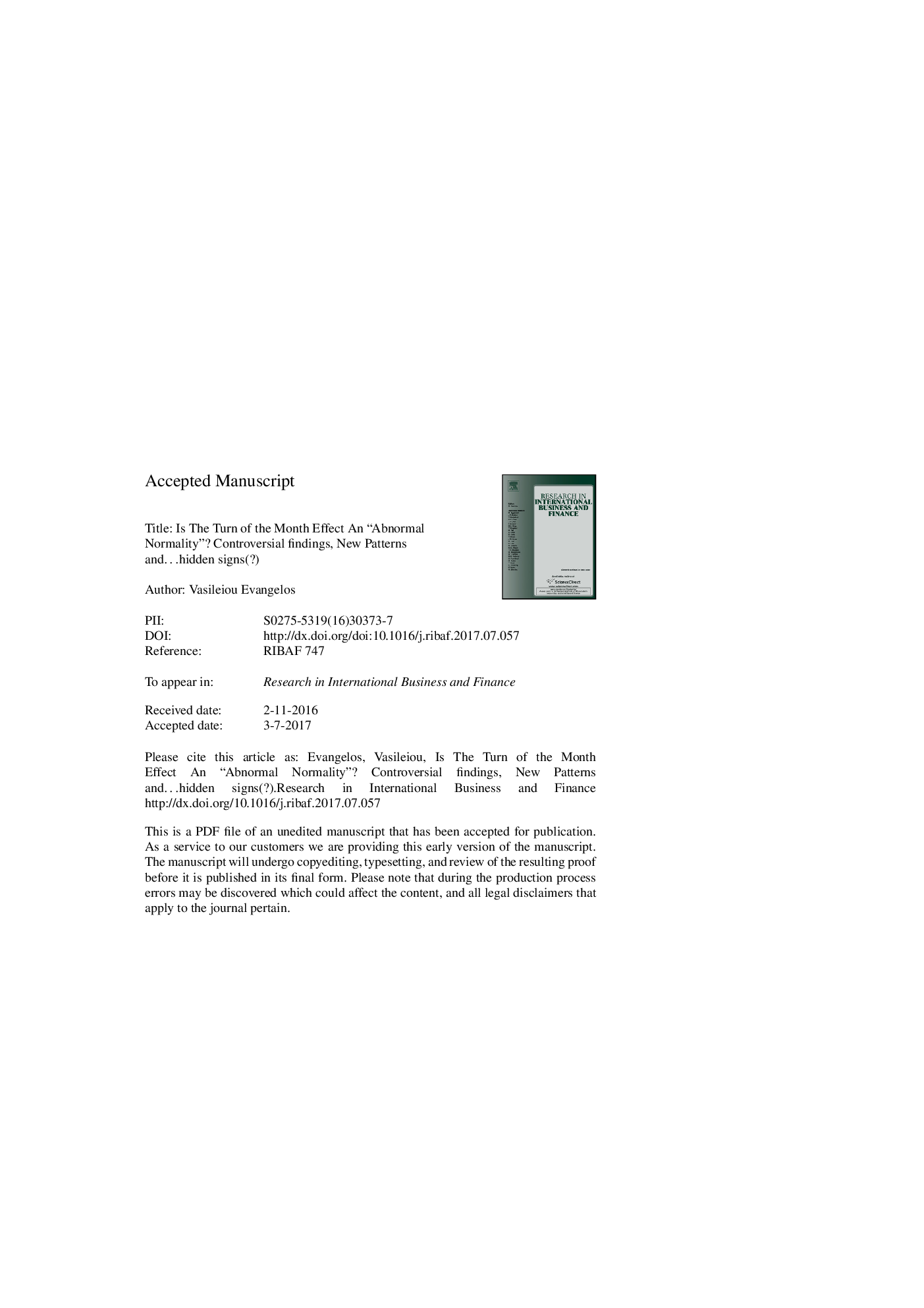| Article ID | Journal | Published Year | Pages | File Type |
|---|---|---|---|---|
| 7413858 | Research in International Business and Finance | 2018 | 60 Pages |
Abstract
This study's main objective is to examine the controversial issue of the existence of calendar anomalies, focusing on the turn of the month effect (TOM). Using a wide data sample of the eleven countries that initially adopted the EURO as their official currency in 1999, this study provides empirical evidence at least for the following: (i) the trading days which are defined as the TOM period should be regularly revised, (ii) when the suitable TOM definition is adopted, the empirical findings suggest that the TOM effect is confirmed in the long term, therefore TOM is not a long lasting anomaly, but an “abnormal normality”, (iii) there could be a strategy based on the TOM which suggests that, in the long term, the efficient market hypothesis (EMH) may be violated in two ways (outperformance and/or lower risk taking), and (iv) there is an interesting pattern based on the TOM signs, which could be an indicator for the financial trend changes. Finally, using the existent data there is no evidence that the TOM effect exists since there is increased liquidity (due to the salary payments) during the TOM days, while several ideas for further study are suggested.
Related Topics
Social Sciences and Humanities
Business, Management and Accounting
Business and International Management
Authors
Evangelos Vasileiou,
